Laysan Island is a beautiful and remote island in the Northwestern Hawaiian Islands chain. With its pristine beaches and crystal-clear waters, Laysan Island serves as a habitat for a diverse community of plants and animals.
However, one group of animals that stands out in this island paradise are birds. Birds are the most abundant group of animals on Laysan Island and they play a vital role in the island’s ecosystem. From magnificent seabirds to bright and colorful songbirds, Laysan Island is a bird lover’s haven.
In this article, we will explore the different species of birds found on Laysan Island and their unique characteristics.
1. Laysan Albatross
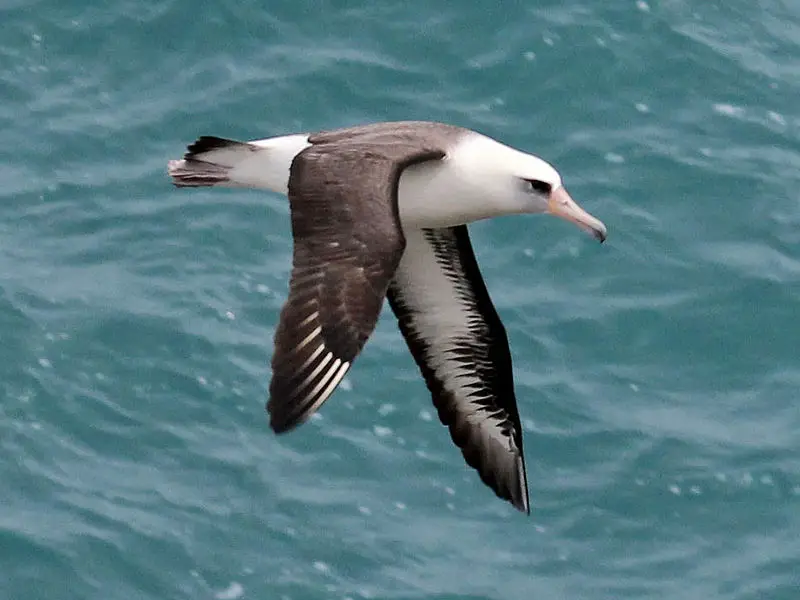
The Laysan albatross is a large seabird found in the North Pacific Ocean. Most of its population (99.7%) can be seen residing in the Northwestern Hawaiian Islands, where they form strong colonies and thrive among their natural habitat there.
They are small for an albatross but still have distinguishable features such as long wingspans that help them soar gracefully above oceans while searching for food over great distances with ease.
It’s estimated to have 1.18 million birds worldwide and continues to expand or re-expand its range throughout other areas of the oceanic region too.Scientific classification:
| Kingdom | Animalia |
| Phylum | Chordata |
| Class | Aves |
| Order | Procellariiformes |
| Family | Diomedeidae |
| Genus | Phoebastria |
| Species | P. immutabilis |
Also Featured In: Albatross Species, Birds You’ll Find in the Sea
2. Laysan Duck
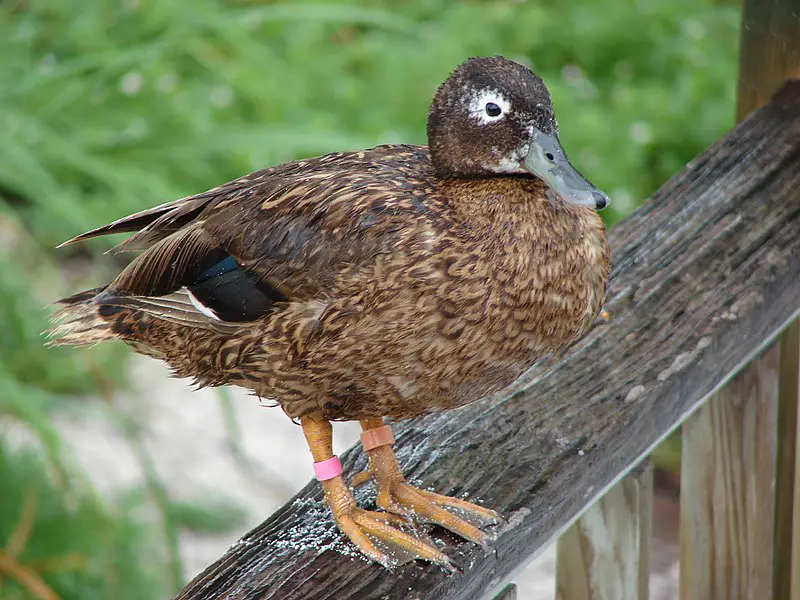
The Laysan duck is a unique bird species found exclusively in the Hawaiian Islands. It is also known as the Laysan teal due to its prominent dabbling behavior.
Fossil records indicate the Laysan duck once inhabited several islands in the archipelago, but it now exists in only three locations.
Interestingly, the duck possesses physical and behavioral characteristics that relate to its predator-free environment.
Unfortunately, due to human activity and other related factors, the duck experienced significant declines in its population, and by 1860, it was on the brink of extinction.
Consequently, conservation efforts were initiated to protect the remaining population.
Today, the Laysan duck is still considered a vulnerable species, but conservation efforts have enabled population recovery, and the bird is now in better shape than in previous years.Scientific classification:
| Kingdom | Animalia |
| Phylum | Chordata |
| Class | Aves |
| Order | Anseriformes |
| Family | Anatidae |
| Genus | Anas |
| Species | A. laysanensis |
Also Featured In: Common Birds of Kauō, Most Common Birds of Midway Atoll
3. Millerbird
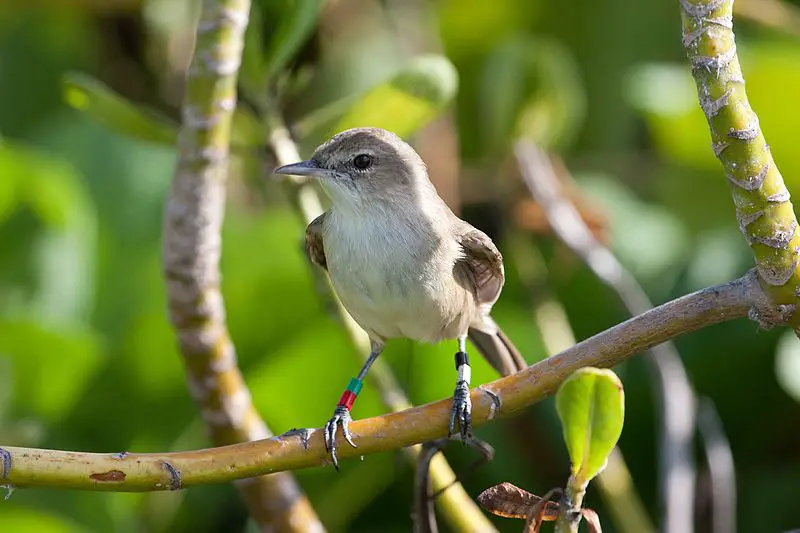
The Millerbird is a small bird belonging to the family Acrocephalidae. It has two subspecies, with one already extinct. The Nihoa Millerbird, found only on the island of Nihoa, is the last surviving race.
It is classified as critically endangered. The bird’s habitat is limited, and it faces threats from habitat loss, diseases, and predators.
Efforts are being made to protect and conserve the delicate ecosystem on Nihoa and ensure the survival of the Nihoa Millerbird.
It has small proportions, unique nesting behavior, and a distinct song.
The Millerbird’s conservation status highlights the need for responsible environmental stewardship and the importance of protecting vulnerable species.Scientific classification:
| Kingdom | Animalia |
| Phylum | Chordata |
| Class | Aves |
| Order | Passeriformes |
| Family | Acrocephalidae |
| Genus | Acrocephalus |
| Species | A. familiaris |
4. Laysan Finch
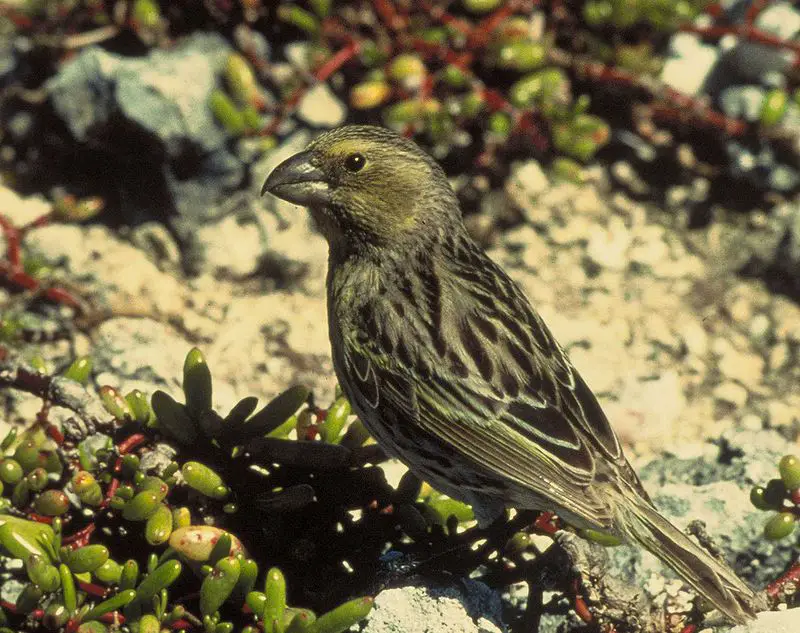
The Laysan finch is a bird endemic to the Northwestern Hawaiian Islands. It belongs to the Hawaiian honeycreeper family and is closely related to the Nihoa finch.
Named after the island it was first discovered on, the Laysan finch was later introduced to a few other atolls. This species is one of only four remaining finch-billed Hawaiian honeycreepers.
Despite its small size, it is a hardy bird that has managed to adapt and survive in a challenging environment.
The Laysan finch is a valuable part of Hawaii’s ecosystem and its preservation is important for the continued health and biodiversity of the islands.Scientific classification:
| Kingdom | Animalia |
| Phylum | Chordata |
| Class | Aves |
| Order | Passeriformes |
| Family | Fringillidae |
| Subfamily | Carduelinae |
| Genus | Telespiza |
| Species | T. cantans |
Also Featured In: Native Birds Of Kure Atoll,
5. Laysan Rail
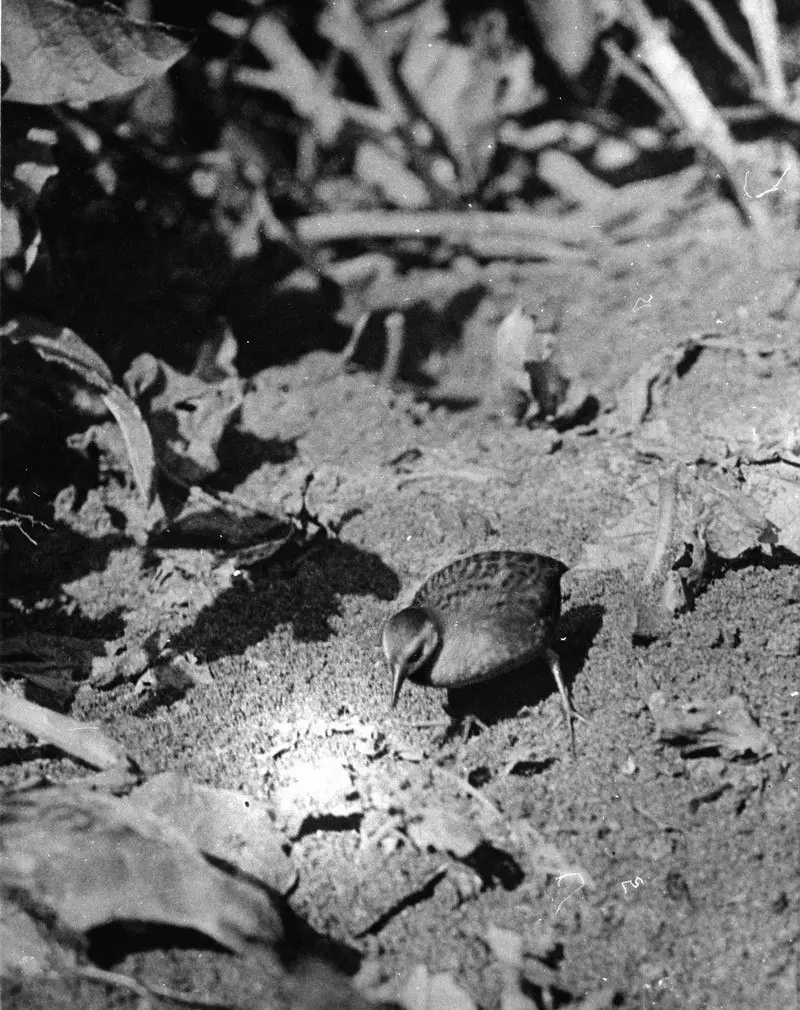
The Laysan rail bird, also known as the Laysan crake, was a flightless species found exclusively on the Northwest Hawaiian Island of Laysan. Unfortunately, this bird went extinct due to habitat loss caused by domestic rabbits and World War II.
Laysan Island was an essential breeding ground for many seabirds, including this rail bird. The loss of habitat led to a decline in the population of Laysan rail birds, and the species couldn’t recover from it.
The scientific name for this bird is Zapornia palmeri, named after Henry Palmer, who collected specimens.
It is a tragedy that this unique bird species is no longer with us, but it serves as a reminder that we must protect our natural environment and the species that call it home.Scientific classification:
| Kingdom | Animalia |
| Phylum | Chordata |
| Class | Aves |
| Order | Gruiformes |
| Family | Rallidae |
| Genus | Zapornia |
| Species | †Z. palmeri |
6. Nihoa Millerbird
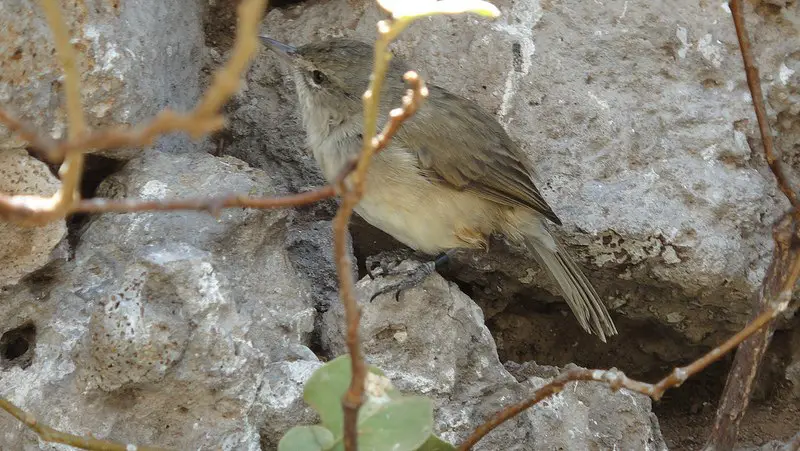
The Nihoa millerbird, also known as Acrocephalus familiaris kingi, is a unique bird subspecies that feeds primarily on Miller moths. Its dark sepia feathers, white belly, and dark beak give it a distinctive appearance.
This small bird is only 5 inches long and can only be found on the island of Nihoa in the Northwestern Hawaiian Islands.
Due to its limited geographic range, conservationists have taken measures to help the species by translocating birds to Laysan Island.
The Nihoa millerbird is an important part of the island’s ecosystem, and its survival is crucial. With careful management and conservation efforts, this bird subspecies can thrive for generations to come.Scientific classification:
| Kingdom | Animalia |
| Phylum | Chordata |
| Class | Aves |
| Order | Passeriformes |
| Family | Acrocephalidae |
| Genus | Acrocephalus |
| Species | A. familiaris |
| Subspecies | A. f. kingi |
7. Telespiza
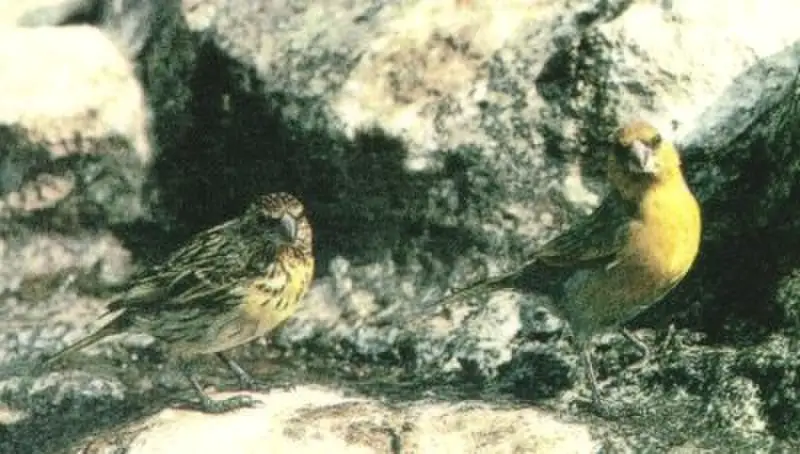
The Telespiza bird is a unique genus of Hawaiian honeycreeper. With all species being endemic to the Hawaiian Islands, they are considered highly specialized.
This means that they have evolved over time to adapt to the unique ecological conditions of Hawaii. Unfortunately, some species of Telespiza birds are not doing well in today’s changing environment.
In fact, there are even some species that are considered extinct. Despite this, there are still some populations of Telespiza birds that can be found on the islands. These birds have bright plumage and can often be seen feeding on nectar or insects.
Overall, the Telespiza bird is an important and fascinating part of Hawaii’s unique natural heritage.Scientific classification:
| Kingdom | Animalia |
| Phylum | Chordata |
| Class | Aves |
| Order | Passeriformes |
| Family | Fringillidae |
| Subfamily | Carduelinae |
| Genus | Telespiza Wilson, 1890 |
8. Laysan Millerbird
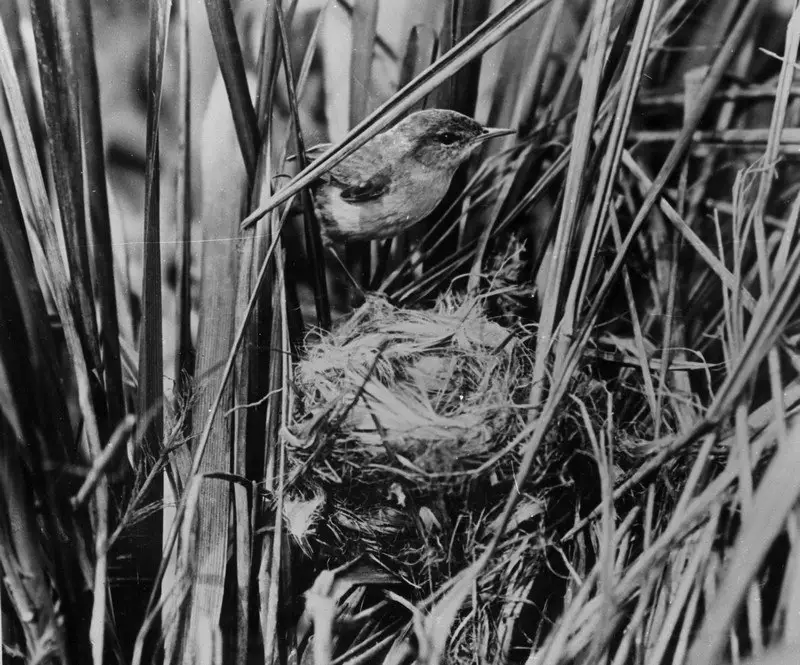
The Laysan millerbird was a bird species that subsisted heavily on various species of moths. Its physical characteristics were similar to the Nihoa millerbird, with a brown dorsal side and grayish belly.
Sadly, this subspecies is now extinct. The bird was named after its favorite food, which were moths from the genus Agrotis, including the endemic and now-extinct Agrotis laysanensis.
Its extinction is a tragedy, as it represents the loss of a unique and important component of the natural world.
The Laysan millerbird’s disappearance highlights the need for conservation efforts and the importance of protecting and preserving vulnerable species.Scientific classification:
| Kingdom | Animalia |
| Phylum | Chordata |
| Class | Aves |
| Order | Passeriformes |
| Family | Acrocephalidae |
| Genus | Acrocephalus |
| Species | A. familiaris |
| Subspecies | †A. f. familiaris |
9. Hawaiian Rail
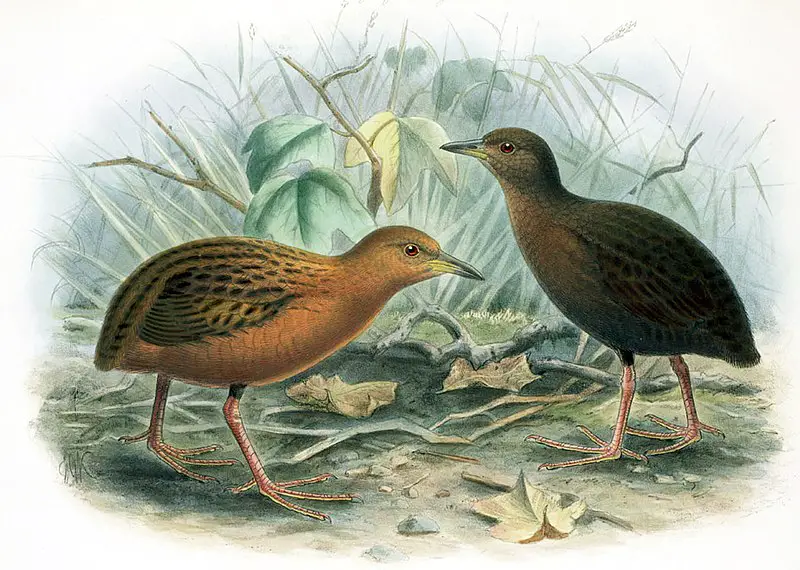
The Hawaiian rail bird, also known as the Hawaiian spotted rail or crake, was a small species of rail that once inhabited the Big Island of Hawaiʻi. However, there are two distinct forms of the bird, causing confusion among scientists.
Although it’s possible that early specimens were collected on another island, it is believed that only Oʻahu and Kauaʻi could be the other potential islands. Unfortunately, this species is now extinct.Scientific classification:
| Kingdom | Animalia |
| Phylum | Chordata |
| Class | Aves |
| Order | Gruiformes |
| Family | Rallidae |
| Genus | Zapornia |
| Species | †Z. sandwichensis |